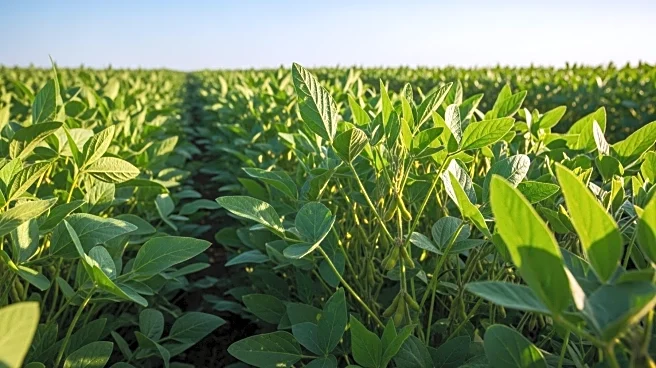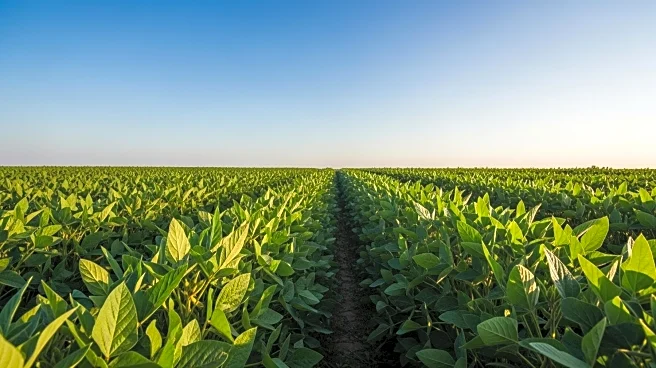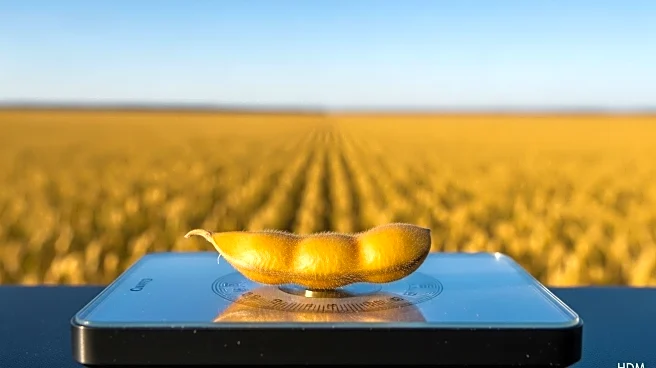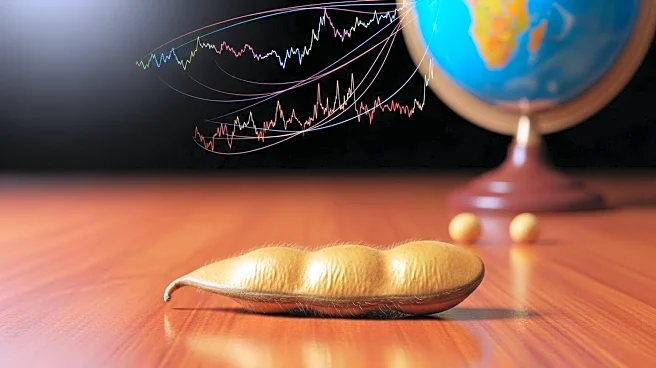What's Happening?
Brazil has made significant progress in its soybean planting for the 2025/26 season, with 9% of the crop already planted as of early October. This marks a rapid pace compared to previous years, driven by favorable conditions in key states like Mato Grosso and Parana. The accelerated planting has led to an increase in production forecasts, with expectations rising by 2.0 million tons to a total of 175.0 million tons. The planting pace is particularly notable in Parana, where 26% of soybeans have been planted, the fastest rate recorded by AgRural. Despite some dry conditions in parts of Brazil, the overall outlook remains positive.
Why It's Important?
The rapid pace of soybean planting in Brazil is crucial for global agricultural markets, as Brazil is a leading producer and exporter of soybeans. The increased production forecast could influence global soybean prices and trade dynamics, impacting U.S. farmers and exporters. As Brazil competes with the U.S. in the global soybean market, changes in Brazilian production can affect U.S. market share and pricing strategies. Additionally, the successful planting season in Brazil may set a precedent for future agricultural practices and innovations in crop management.
What's Next?
Brazilian farmers will continue to monitor weather conditions closely, as the success of the planting season depends on adequate rainfall and favorable temperatures. The focus will be on ensuring the health and development of the crops to meet the increased production forecasts. Market analysts and stakeholders will watch for any shifts in global soybean prices and trade patterns as Brazil's production figures become clearer. The agricultural community may also explore strategies to optimize planting and harvesting processes in response to Brazil's advancements.
Beyond the Headlines
The developments in Brazil's soybean planting may prompt discussions on sustainable agricultural practices and the role of technology in enhancing crop yields. As Brazil continues to expand its agricultural output, there may be increased attention on environmental impacts and the need for responsible farming methods. This situation could lead to collaborations between international agricultural bodies to share best practices and address global food security challenges.










